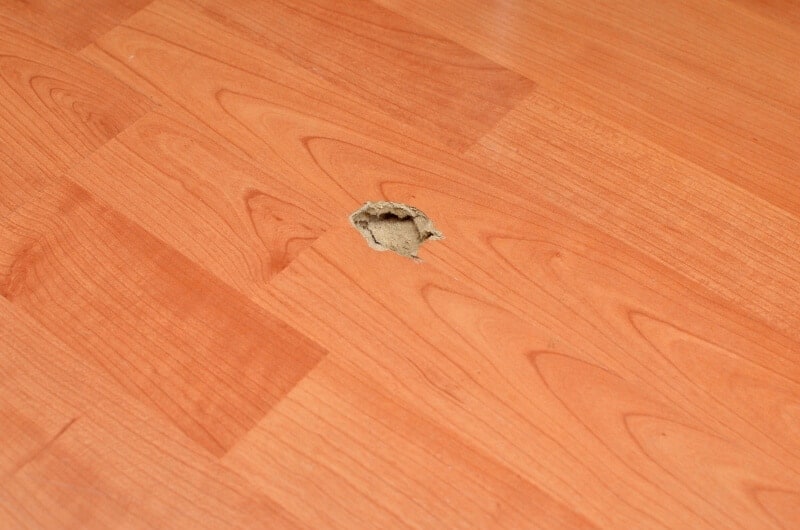Removing water stains from hardwood floor: Here’s how it works
A spilled glass or a bucket that has fallen over – water can quickly get onto the hardwood flooring due to minor inattention and cause unsightly water stains. This article will show you how best to remove them.
How do water stains appear on the parquet floor?
Prolonged water exposure does not be good for the parquet.
Because the soil from the natural raw material wood reacts to moisture. In order to avoid damage in the parquet, water laughter should therefore be avoided in general.
Should an accident nevertheless occur, the following applies: The faster the water is wiped up, the better.
If it is removed in a timely manner, no undesirable consequences can be feared due to the wetness.
However, if water remains on the parquet for a longer period of time, it can penetrate into the joints and lead to increased swelling of the floor. Water stains also only occur if the wetness can penetrate the parquet.
Water stains on the parquet floor – what now?
Water stains on the parquet are annoying because they affect the appearance of the floor.
The good news is, however, that damage caused by water spots in the parquet can be repaired relatively well. Depending on whether it is a bright or a dark water stain or oiled or lacquered parquet, there are different approaches.
Remove bright water stains
Bright water spots are only superficial – the water has not penetrated into the interior of the parquet.
Bright water stains can be easily removed from both painted and oiled parquet floors.
No aggressive cleaners are necessary, simple household remedies are completely sufficient in most cases:
Simply apply water-dissolved baking soda or salt, white toothpaste, lubricating soap or paint gasoline to the bright water stain in the parquet and remove with a soft cloth.
The cleaned area can then be treated with oil or sealed sealed.
Remove dark water stains
Dark water stains indicate that the water has penetrated the parquet and reacted with the tannic acid contained in the wood (for oak parquet and acacia). This is why the removal of dark water stains in hardwood flooring is different from the removal of light-coloured stains. The actual cost depends on whether the parquet has been oiled or varnished.
Oiled parquet
In the case of oiled parquet, it is possible to treat the water stain with special tannic acid stain sprays even without pre-treatment and to remove light water edges with it.
The more complex, but also more reliable method is to grind down the affected area and re-oil it. In the case of very small stains, it is also possible to cut out the area with a cutter knife and then repair it with a parquet repair kit.
The oil layer must first be removed – this works best with coarse sanding paper.
When the water stain is reached, use fine sandpaper to avoid sanding too much of the surface. The water stain can be treated with even sanding movements until it is no longer visible. Afterwards, the fine dust produced is removed with a vacuum cleaner and a new layer of oil is applied. Visible transitions/gloss differences between old and new oil layer can sometimes be adjusted with steel wool. Often the colour differences disappear after a few years by themselves, through the regular use of parquet care. Finally, the entire parquet should be treated with suitable care products.
Painted parquet
In principle, this method is also possible to remove water stains from lacquered parquet. However, partial sanding always leads to colour differences in the parquet, as the floor darkens over time. Therefore, in such cases the complete parquet floor must actually be sanded down. This is the only way to avoid differences in colour and gloss.
* Last updated on 2024-07-26 / We are using affiliate links / All images are served from the Amazon Product Advertising API.
Table of Contents





